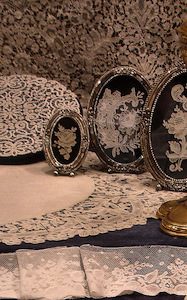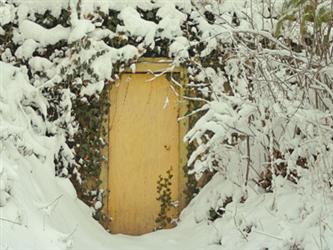 We often equate darkness with sorrow, misery, get-me-the-hell-out-of-here reaction. At least I do. That’s why I keep a mammoth Happy Lite on my smallish cubicle at work.
We often equate darkness with sorrow, misery, get-me-the-hell-out-of-here reaction. At least I do. That’s why I keep a mammoth Happy Lite on my smallish cubicle at work.
But darkness can also be a treasure.
Say what?
J. R. Miller writes this in “From Streams in the Desert” by L. B. Cowman:
In the famous lace shops of Brussels, there are special rooms devoted to the spinning of the world’s finest lace, all with the most delicate patterns. The rooms are kept completely dark, except for the light that falls directly on the developing pattern, from one very small window. Only one person sits in each small room, where the narrow rays of light fall upon the threads he is weaving, for lace is always more beautifully and delicately woven when the weaver himself is in the dark, with only his work in the light.
Sometimes the darkness in our lives is worse, because we cannot even see the web we are weaving or understand what we are doing. Therefore we are unable to see any beauty or possible good arising from our experience. Yet, if we are faithful to forge ahead and “if we do not give up” Gal. 6:9, someday we will know that the most exquisite work of our lives was done during those days when it was the darkest.
If you seem to be living in deep darkness because God is working in strange and mysterious ways, do not be afraid. Simply go forward in faith and in love, never doubting Him. He is watching and will bring goodness and beauty from all your pain and tears.
This metaphor for hope reminded me of the story of 16th-century sculptors that I explained in my Commencement address to the students of Saint Mary’s College. (Note: the sculptor story and the lace story are not my discoveries—both came to me via a beautiful friend who is a messenger of hope.) In the speech I wrote:
According to a popular legend, dishonest sculptors in 16th-century Rome and Greece would use wax to fill in the cracks and crevices of marble to make the surface appear solid. The wax would disintegrate, of course, right after the sculpture was made. This happened so often that stonecutters began to stamp blocks of authentic marble with the Latin words, Sine Cere, or “without wax.” That’s where the word sincere found its origins.
To be sincere, then, doesn’t mean that we don’t have cracks and fractures, but that we don’t attempt to fill in those imperfections with things that don’t stand the test of time.
I believe that God lives in the space between the cracks and fractures of our souls. It is God that grounds and shelters our being and gives us the sense of safety and security that is needed to make ourselves vulnerable before each other, and then to go beyond ourselves to spread love to the rejected and hope to the hopeless.
Amid all the counseling, medications and therapies I’ve tried over the years, it is ultimately my faith in a loving God that has held me together during the darkest of times. When nothing else could convince me to stick around, I became a scared child in the arms of God—and reminded myself that I didn’t have to do anything or write anything or be anyone for God to love me and use me as an instrument of his great love.
God is the reason I can be Sine Cere.
And so it is with you.

